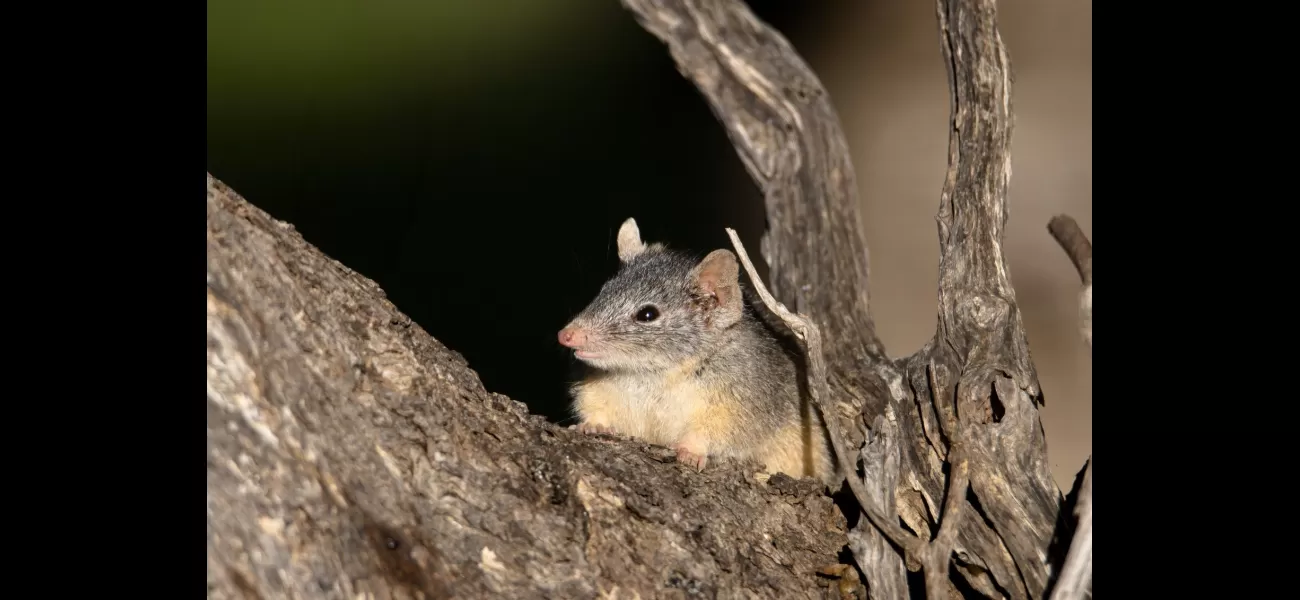Adorable animal known for deadly mating rituals hides a more sinister truth.
Graphic image alert. Caution: Disturbing photo ahead.
January 19th 2024.

It's no secret that Australia is home to some pretty wild and unique wildlife. Just take a look at the platypus - but be careful not to touch! This egg-laying otter with a duck's bill might sting you with its venomous heel spine. These creatures are truly fascinating, but they can also be a little bit mad.
One of the lesser-known weirdos of the Australian animal kingdom is the antechinus, a small mouse-like marsupial found in the nation's forests. At first glance, they may seem like your average small, furry critter. However, these little guys are famous for their three-week long breeding season, during which the males engage in so much sex that they end up dying.
This phenomenon, known as semelparity or "suicidal reproduction," involves intense sex sessions lasting up to 14 hours at a time. As the weeks go by and testosterone levels continue to surge, another hormone called cortisol floods the body, leading to multiple organ failure and a rather unpleasant death.
But now, scientists have made a gruesome discovery about the fate of these sexually-charged antechinus. Cannibalism.
Yes, you read that right. Researchers in Queensland have observed an antechinus that managed to survive the breeding season by feasting on a less fortunate rival. Warning: the image below may be graphic for some.
According to Associate Professor Andrew Baker from Queensland University of Technology, "During the breeding season, males and females mate promiscuously in frenzied bouts lasting as long as 14 hours. Eventually, this leads to stress-induced death for all males as their testosterone levels skyrocket and cortisol levels reach dangerous levels. The males simply drop dead, leaving an opening for other males and pregnant or lactating females to cannibalize them for a quick energy boost."
The discovery was made by Elliot Bowerman, a council employee from the Sunshine Coast who was on a two-night trip to Lookout Point in the New England National Park. While inspecting some plants, he heard a rustling sound and followed it to find an antechinus dragging the body of another one before stopping to devour it.
Both of the animals were identified as mainland dusky antechinuses by the research team. "In places where two antechinus species, the dusky and the brown antechinus, coexist, the slightly separated breeding periods provide the perfect opportunity for cannibalism to occur," explains Professor Baker. "Each species may benefit from eating dead males of the other species. For the earlier-breeding antechinus, this means that pregnant and lactating females can get a high-energy meal by cannibalizing the males of the later-breeding species as they die off. And for the later-breeding species, both males and females may take advantage of the opportunity to cannibalize the dead males of the earlier-breeding species to gain weight and condition before their own breeding period begins."
It may sound brutal, but in the non-human world, it's all about survival and reproduction. And it seems like this particular antechinus has managed to do both - at least for now. "In our study, we're not entirely sure if the antechinus feeding on the dead one was a male or female, but it's most likely a male," says Professor Baker. "Although males are known to eat less during the breeding season compared to females, both sexes have been observed eating at this time. The antechinus we saw appeared to be in good health, but it did have some injuries and hair loss, which are often signs of stress in males. It's possible that this antechinus would have eventually become someone else's meal."
It's clear that the animal kingdom can be a pretty brutal and unforgiving place, with new discoveries being made all the time. From toxic new species to invasive alien creatures, it seems like our planet is constantly being overrun by unique and sometimes terrifying animals. But hey, that's nature for you.
One of the lesser-known weirdos of the Australian animal kingdom is the antechinus, a small mouse-like marsupial found in the nation's forests. At first glance, they may seem like your average small, furry critter. However, these little guys are famous for their three-week long breeding season, during which the males engage in so much sex that they end up dying.
This phenomenon, known as semelparity or "suicidal reproduction," involves intense sex sessions lasting up to 14 hours at a time. As the weeks go by and testosterone levels continue to surge, another hormone called cortisol floods the body, leading to multiple organ failure and a rather unpleasant death.
But now, scientists have made a gruesome discovery about the fate of these sexually-charged antechinus. Cannibalism.
Yes, you read that right. Researchers in Queensland have observed an antechinus that managed to survive the breeding season by feasting on a less fortunate rival. Warning: the image below may be graphic for some.
According to Associate Professor Andrew Baker from Queensland University of Technology, "During the breeding season, males and females mate promiscuously in frenzied bouts lasting as long as 14 hours. Eventually, this leads to stress-induced death for all males as their testosterone levels skyrocket and cortisol levels reach dangerous levels. The males simply drop dead, leaving an opening for other males and pregnant or lactating females to cannibalize them for a quick energy boost."
The discovery was made by Elliot Bowerman, a council employee from the Sunshine Coast who was on a two-night trip to Lookout Point in the New England National Park. While inspecting some plants, he heard a rustling sound and followed it to find an antechinus dragging the body of another one before stopping to devour it.
Both of the animals were identified as mainland dusky antechinuses by the research team. "In places where two antechinus species, the dusky and the brown antechinus, coexist, the slightly separated breeding periods provide the perfect opportunity for cannibalism to occur," explains Professor Baker. "Each species may benefit from eating dead males of the other species. For the earlier-breeding antechinus, this means that pregnant and lactating females can get a high-energy meal by cannibalizing the males of the later-breeding species as they die off. And for the later-breeding species, both males and females may take advantage of the opportunity to cannibalize the dead males of the earlier-breeding species to gain weight and condition before their own breeding period begins."
It may sound brutal, but in the non-human world, it's all about survival and reproduction. And it seems like this particular antechinus has managed to do both - at least for now. "In our study, we're not entirely sure if the antechinus feeding on the dead one was a male or female, but it's most likely a male," says Professor Baker. "Although males are known to eat less during the breeding season compared to females, both sexes have been observed eating at this time. The antechinus we saw appeared to be in good health, but it did have some injuries and hair loss, which are often signs of stress in males. It's possible that this antechinus would have eventually become someone else's meal."
It's clear that the animal kingdom can be a pretty brutal and unforgiving place, with new discoveries being made all the time. From toxic new species to invasive alien creatures, it seems like our planet is constantly being overrun by unique and sometimes terrifying animals. But hey, that's nature for you.
[This article has been trending online recently and has been generated with AI. Your feed is customized.]
[Generative AI is experimental.]
0
0
Submit Comment





